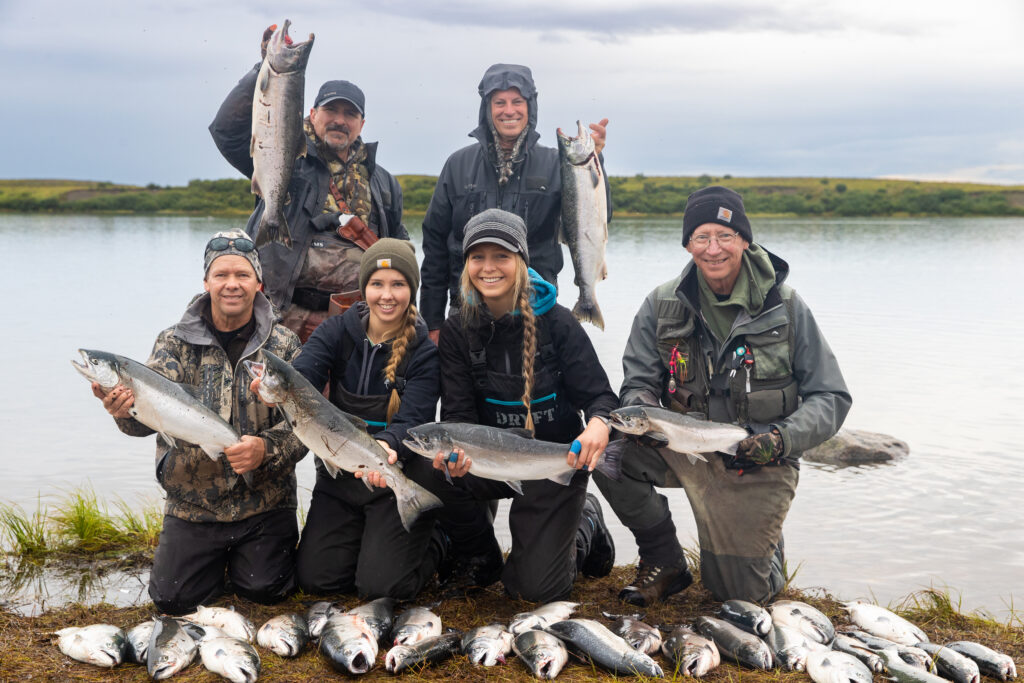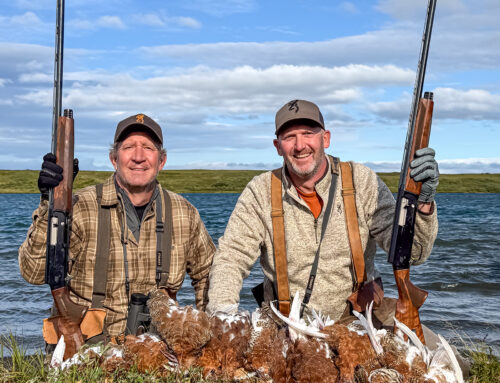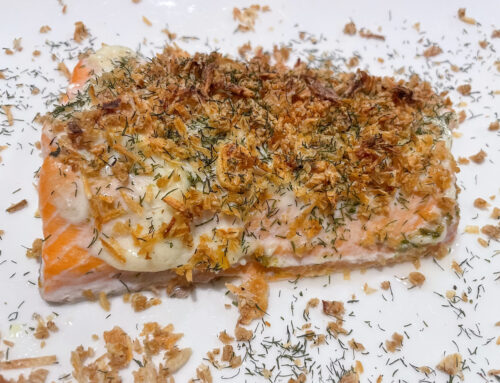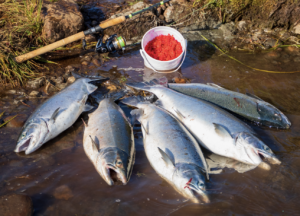 It’s no secret king salmon runs are declining in Alaska, and they have been for many years. In some rivers, returning kings are small, weighing only a few pounds, not upwards of 30 pounds like they once did. Other rivers have restricted fishing days, some even shutting down at mid-season. Add in restricted daily and possession limits and there’s no question Alaska’s king salmon are in trouble.
It’s no secret king salmon runs are declining in Alaska, and they have been for many years. In some rivers, returning kings are small, weighing only a few pounds, not upwards of 30 pounds like they once did. Other rivers have restricted fishing days, some even shutting down at mid-season. Add in restricted daily and possession limits and there’s no question Alaska’s king salmon are in trouble.
So, what can we do to help, at least partially? For sport anglers, silver salmon could be the answer.
Whether you’re a resident looking to put meat in the freezer, or a traveling angler from out of state, consider targeting coho instead of king salmon. One of the biggest hurdles for many anglers to overcome is breaking routines. Everyone who fishes in Alaska wants a mighty king salmon, just as every hunter wants a big bull moose. The starting point to preserving king salmon runs starts with a change in thinking, so forget about kings, at least for a few years, and focus on silver salmon.
 Silver salmon runs are later in the summer than kings, they’re plentiful, and coho occupy many rivers and streams. This means you don’t have hoards of anglers congregating in small sections of a river, as you do with king and even sockeye salmon.
Silver salmon runs are later in the summer than kings, they’re plentiful, and coho occupy many rivers and streams. This means you don’t have hoards of anglers congregating in small sections of a river, as you do with king and even sockeye salmon.
Coho runs are also much longer than kings, lasting months instead of a few weeks. August through October is prime time to catch coho salmon throughout much of Alaska, but there are rivers in Alaska where you can catch them in late July, even into early November. Limits are also generous when it comes to silver salmon, meaning you can put a lot of meat in the freezer or canner.
As for the fight, if a 70 pound king battled as hard as a silver salmon, you’d be hard pressed to land it. Not only do silvers jump, they dive, twist, turn and make long runs. Coho salmon can be caught in very remote waters, where battling 50 fish a day is common, and you’ll never see another angler; it’s the ultimate Alaskan fishing experience when you think about it. Silver salmon can also be caught along many of Alaska’s road systems, where access is easy and cheap.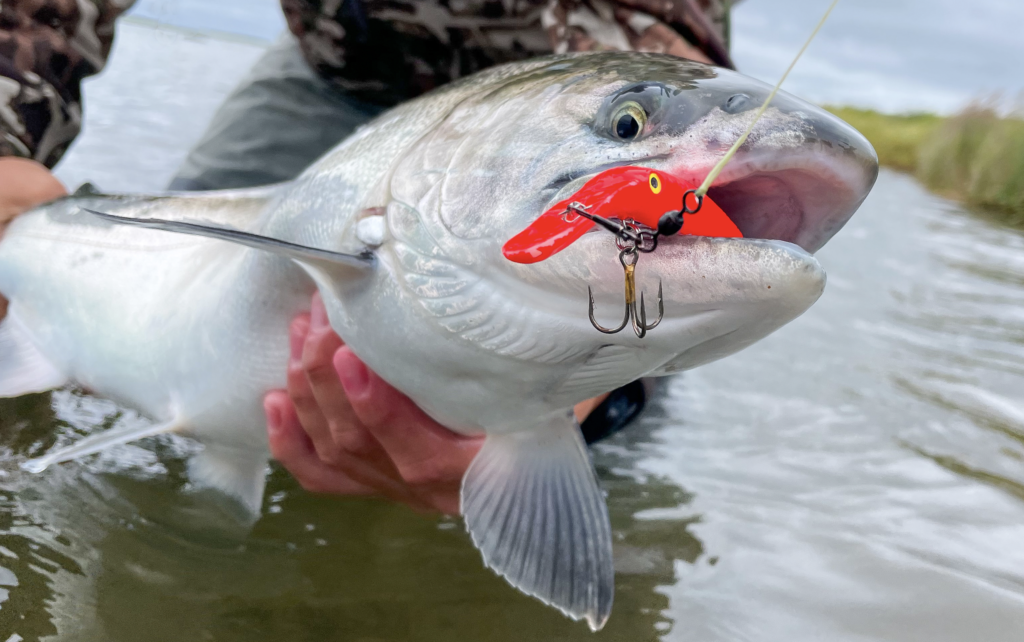
Coho can also be fished for in multiple ways, adding even more to the adventure and fun of catching them. Tired of dragging bait or backtrolling heavy gear in rivers all day for kings? Not a problem with coho. Coho salmon can be caught on jigs–both twitching and beneath a float–as well as on a variety of spinners, even by casting shallow diving plugs. They can be caught on topwater plugs–something bass and pike anglers will love–and on poppers by flyfishing fans. Once you experience the thrill of a coho topwater take, you’ll be hooked.
Coho salmon are easily accessed from the banks of big rivers, small streams, even some lakes, throughout much of their range in Alaska, as they routinely migrate close to shore. They can be targeted in tidewater, too. Stripping and swinging streamers through an incoming tide is a rush, as these fresh coho battle to the very end, and make exceptional table fare.
Once you’ve secured a limit of coho, you can keep fishing in some waters in Alaska, catch and release; that’s what we do on the Egegik River. Sometimes we fish with fresh cured salmon eggs, and once an angler has their five keeper coho salmon, we’ll switch to artificial presentations for catch and release. This insures that coho intended to be released don’t get hooked too deeply by swallowing eggs, and can be released in good condition. Also, going with barbless hooks helps. Catch and handle fish with care, landing them quickly and touching them as little as possible; keep them in the water the whole time and do not drag them up on the bank where they flop around and loose their protective slime layer. Having a pair of needle nose pliers handy, for quick hook removal, is key to a fast release and low mortality rates. Just because there are millions of these bright, gorgeous salmon, doesn’t mean they should be mishandled; we do not want a repeat performance of the dwindling Alaska king salmon numbers.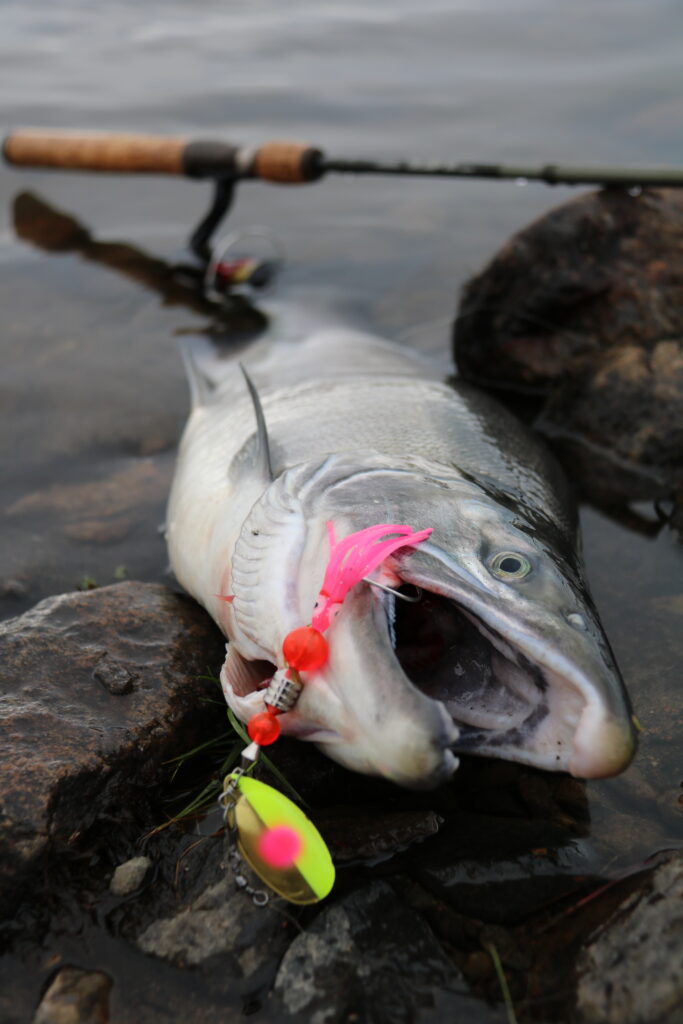
When releasing tidewater coho, handle them with extra care, as they are much more fragile than they will be once they acclimate to the river and have firmer scales. Do everything in your power to avoid mortality, period.
If looking for a remote Alaskan coho fishing experience that’s fairly easy to get to, consider fishing with us at Becharof Lodge on the Egegik River. The accommodations are more of a comfortable camp than a fancy lodge that charges three times our rate, and the fishing is as good as you’ll find anywhere in Alaska. Just ask some of the clients who’ve been fishing with us every August for the past 15 years. Many first time anglers have come here and landed over 50 coho a day. Some seasoned salmon anglers routinely catch and release 100+ coho in a day on the Egegik River.
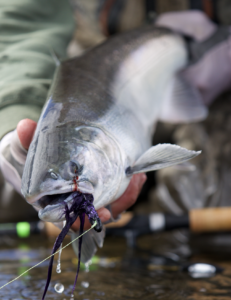 If you want to learn how to fish, catching fish while learning different techniques makes it fun, rewarding and significantly flattens the learning curve. If looking to hone a new technique, what better way to learn than practicing where there are fish? That’s the case with Becharof Lodge on the Egegik River
If you want to learn how to fish, catching fish while learning different techniques makes it fun, rewarding and significantly flattens the learning curve. If looking to hone a new technique, what better way to learn than practicing where there are fish? That’s the case with Becharof Lodge on the Egegik River
One of the techniques many salmon and steelhead anglers are eager to master is twitching jigs. It’s not easy to learn to twitch, properly. So many anglers put emphasis on the twitching action, or the lifting of the jig, when it’s a quick, rapid fall you want to achieve. David Stumpf, our head guide, is about the best twitcher we’ve seen, and he’s taught a lot of people how to properly twitch jigs for salmon. You don’t want to snag fish by quickly lifting the jig into them, you want them to attack it, and this happens on the drop which must occur in a fast, free-fall, action.

Fishing big beads is another draw of Becharof Lodge on the Egegik River. BnR Tackle Soft Beads have a very high rate of success on the Egegik River. Many folks aren’t even fishing eggs anymore on the Egegik River. They figure they actually get more fishing time, not having to mess with eggs, and ultimately, catch more fish with the BnR Tackle Soft Beads.
The 32mm BnR Tackle Soft Beads have been the hottest size for coho salmon on the Egegik River, but some anglers still think of it as a single egg rather than an egg cluster, and struggle with the mental concept of using such a large bait. Coho are ravenous predators and have a huge mouth; a 32mm bead is nothing for them inhale.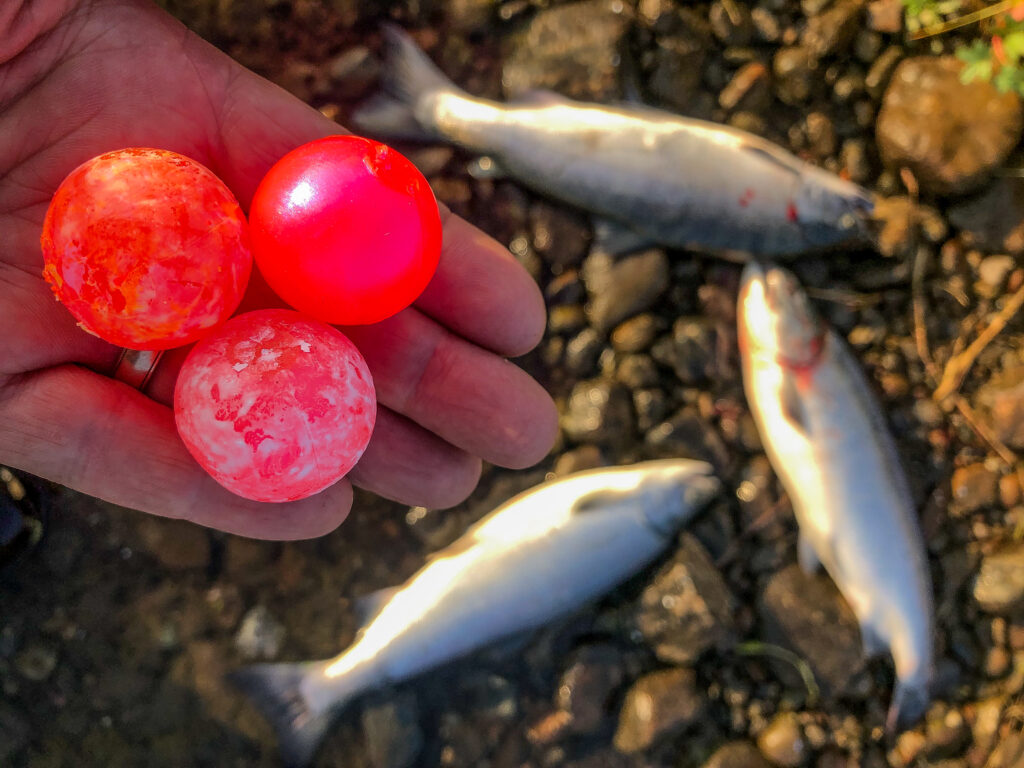
The 25mm BnR Tackle Soft Beads are also great producers for silver salmon on the Egegik River. These can be fished alone or stacked, drift-fished or suspended below a float. BnR Soft Beads are neutral buoyant so you get the ideal drift with each cast, no matter how it’s fished. We’ve even swung them on fly rods with success.
The Egegik River allows fishing with bait, something not every river in Southwest Alaska does. A very high number of anglers at Becharof Lodge on the Egegik River enjoy drift fishing cured salmon eggs for coho salmon. Every day of the silver salmon season we’re curing up several pounds of fresh caught coho eggs with Pro-Cure’s top line of cures. Red and orange colored egg cures work best.
 The Egegik River is simple to wade and easy to fish. The small gravel bottom and gentle flow means few hangups, which maximizes fishing time and leads to more fish being caught.
The Egegik River is simple to wade and easy to fish. The small gravel bottom and gentle flow means few hangups, which maximizes fishing time and leads to more fish being caught.
A favorite way of some anglers to catch coho on the Egegik River is by casting plugs. We’re not talking big, heavy plugs, either, rather tiny 2.0 Mag Lips, even F4 Flatfish work to catch coho on this wide but gentle river.
With a five coho a day limit, there’s no shortage of salmon fillets going home with folks who fish with us at Becharof Lodge on the Egegik River. The staff fillets, cleans, vacuum seals and freezes the fish for the trip home.
With king salmon numbers declining in many of Alaska’s streams, now is the time to change our train of thought and focus on a more abundant salmonid to catch, before it’s too late. The answer to saving Alaska’s king salmon could lie in targeting coho, making them the new king of salmon, at least for now.
So, check out all the details on our website and let’s go fishing! We’d love to have you experience what world-class coho salmon fishing is really like in remote Alaska with all of us at Becharof Lodge on the Egegik River!
